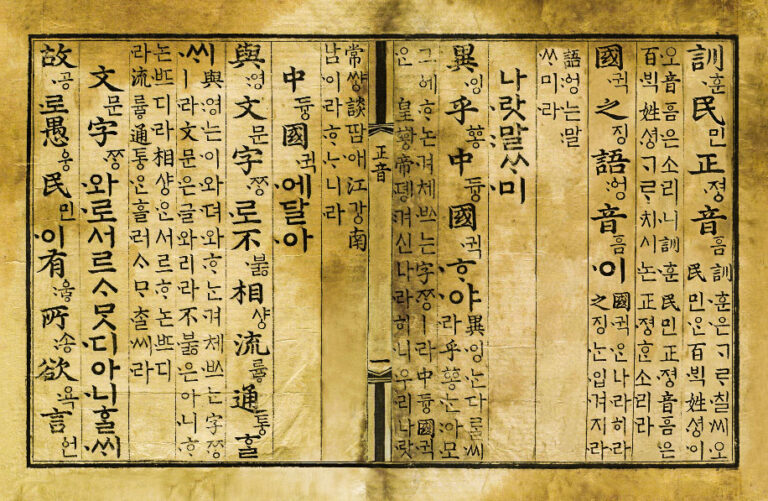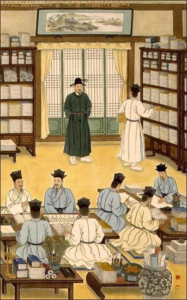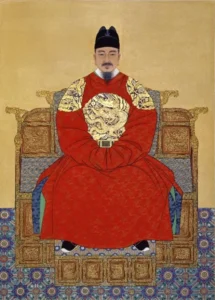The invention of Hangeul (also spelled Hangul), the Korean alphabet, marks a pivotal moment in Korea’s cultural and linguistic history. King Sejong the Great (1397–1450), the fourth ruler of the Joseon Dynasty, personally led the creation of this phonetic writing system. Unlike traditional scripts used at the time, Hangeul was scientifically structured and intentionally designed to be easy for everyday people to learn and use.
Today, Hangeul stands out for its logical design and remarkable accessibility. More than just an alphabet, it represents Korea’s spirit of innovation and commitment to educational equity. In this article, we’ll dive into the origins of Hangeul, examine the motivations behind its development, and explain how it transformed the Korean language for generations to come.

The Linguistic Landscape Before Hangeul
Before the 15th century, Koreans used classical Chinese (Hanja) for reading and writing. Hanja was the official script at the time. However, it could not accurately reflect Korean sounds or grammar. As a result, only elite scholars—mainly yangban men—could read or write. Most commoners remained illiterate. This language barrier deepened social inequality and limited access to education.
According to the Encyclopedia of Korean Culture, the inefficiency and exclusivity of Hanja led to widespread social inequality and hindered administrative communication. Recognizing this problem, King Sejong sought to democratize literacy and promote education among all citizens.

The Birth of Hangeul Under King Sejong
In 1443, King Sejong assembled a team of scholars from the Hall of Worthies (Jiphyeonjeon, 집현전) to develop a new script. Completed and promulgated in 1446 under the name “Hunminjeongeum” (훈민정음), meaning “the correct sounds for the instruction of the people,” the new alphabet consisted of 28 letters—14 consonants and 10 vowels in its original form.
King Sejong outlined his motivation in the preface to the Hunminjeongeum Haerye, the explanatory text that accompanied the release of the new script. He emphasized that Korean differed significantly from Chinese, making Chinese characters an inadequate tool for expressing the Korean language. As a result, he and his scholars created a completely new set of letters—ones that people could easily learn and use comfortably in everyday life. (Korea History Online)
Scientific Principles Behind Hangeul
Hangeul’s design is firmly based on phonological science. Each consonant mimics the shape of speech organs during pronunciation. For example, the letter ㄱ (g/k) shows the tongue blocking the throat. The letter ㅁ (m) resembles a closed mouth.
Vowels use three core symbols. A dot (•) represents the sun or heaven. A horizontal line (ㅡ) stands for the earth. A vertical line (ㅣ) symbolizes humans. These elements reflect Confucian cosmology—heaven, earth, and man.
This visual and logical structure makes Hangeul easy to learn. It remains one of the most intuitive writing systems in the world.
Legacy of King Sejong and the Global Relevance of Hangeul
King Sejong is revered not only for his linguistic contributions but also for his commitment to justice, science, and welfare. His reign was marked by an emphasis on public education, agricultural reform, and the development of tools to support the people, such as rain gauges and water clocks.
King Sejong’s role in the invention of Hangeul exemplifies his belief in governance through compassion and enlightenment. By creating a tool for universal literacy, he forever changed the trajectory of Korean culture and communication.

Hangeul’s Lasting Impact
The creation of Hangeul was more than a linguistic breakthrough. It was a powerful act of social empowerment. King Sejong gave voice to the voiceless. He enabled common people to read, write, and express themselves.
Through Hangeul, he built a more inclusive and educated society. Today, Hangeul stands at the heart of Korean identity. It also proves the impact of thoughtful, people-centered innovation.
Centuries later, Hangeul still thrives. It reminds us that accessible language can shape a nation’s future.
Reference
Other Relevant Readings
Introduction & Hangeul >>
